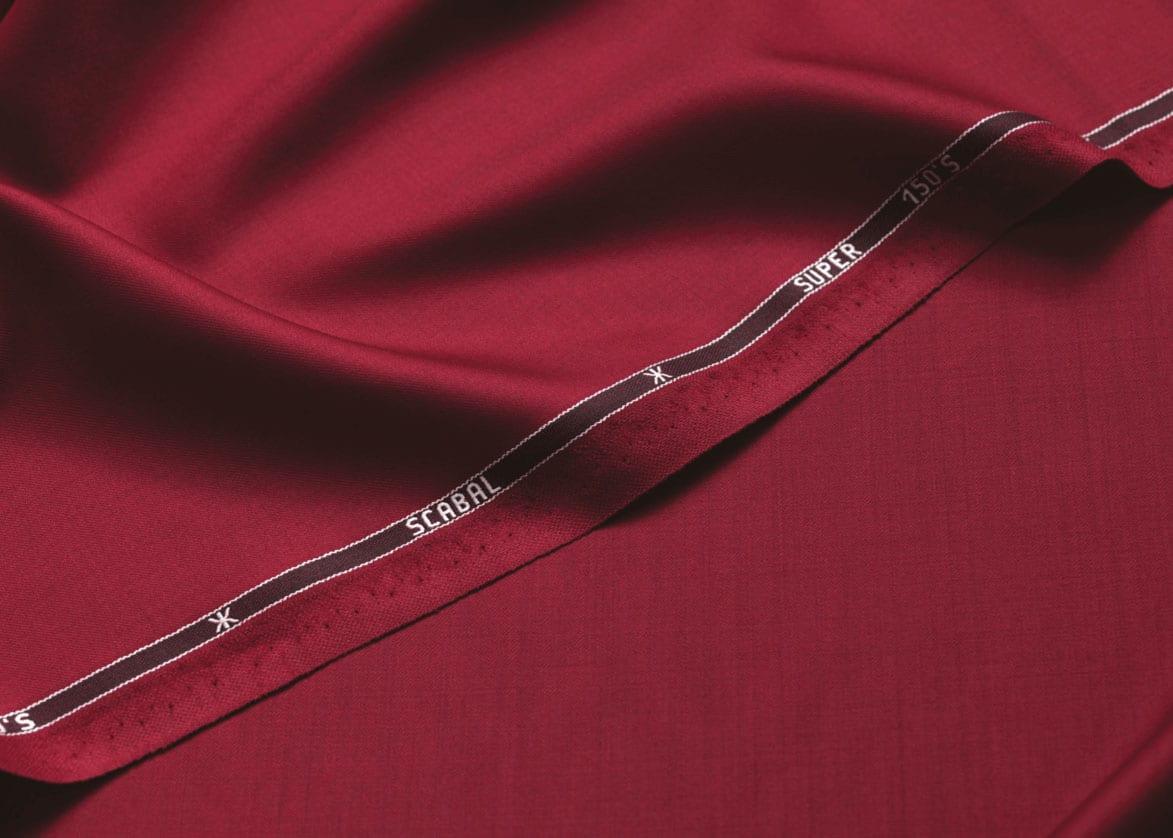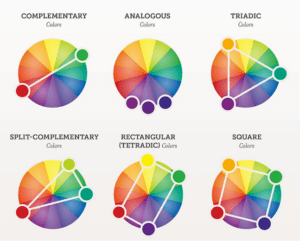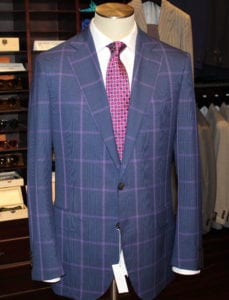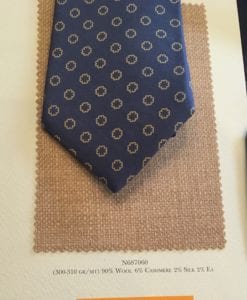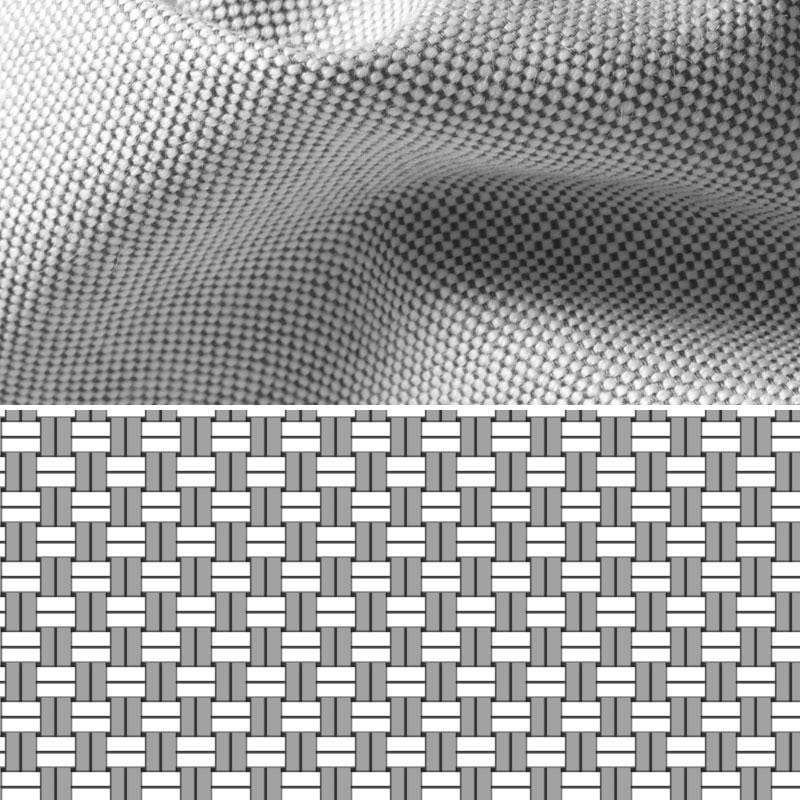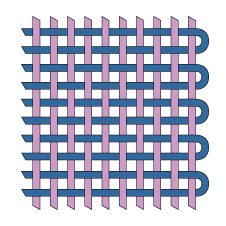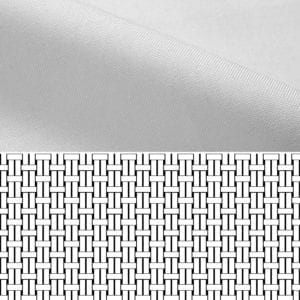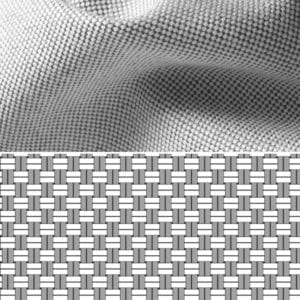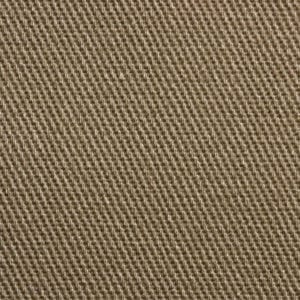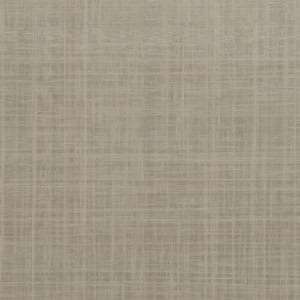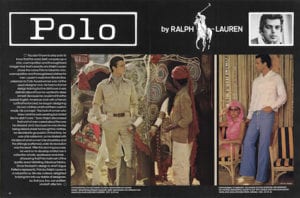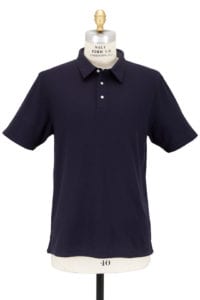September 5, 2018 + Menswear, Tailoring, womenswear
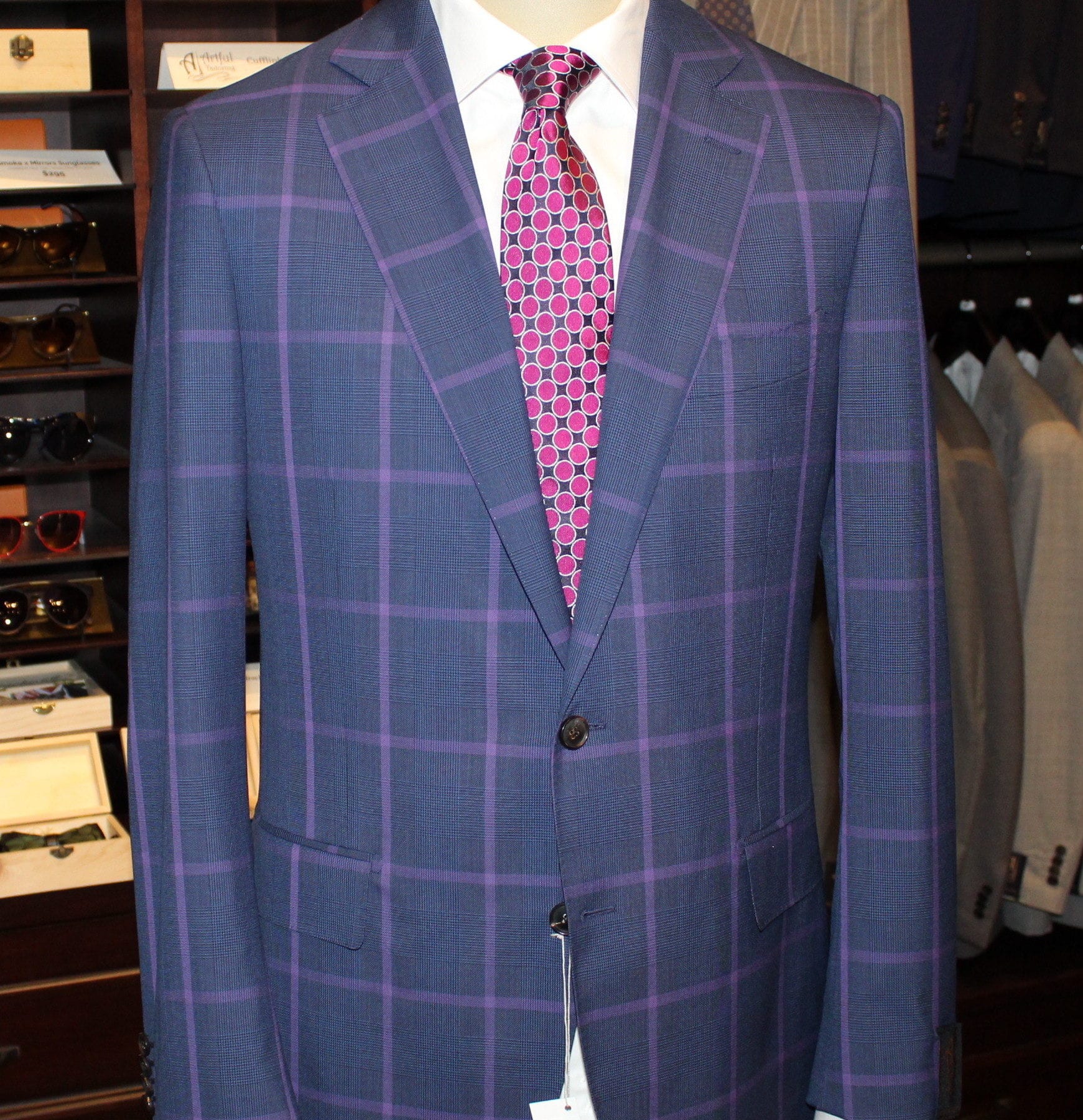
If you’re new to the suit and tie game, or just want to step up your sartorial looks, Artful Tailoring is here to provide you with no-fail suit and tie combinations that you can start putting together today!
Let’s start with the basics: the color chart. Knowing foundational color theory will help you because a tie matching master in no time at all.
Keeping in mind these 6 color schemes will be key in creating the perfect outfit combinations. Typically, most suits and jackets that you’ll own are made up of various neutrals such as black, shades of grey and charcoal, tan, and shades of blue, and even brown. Your suit should be the primary color, and the shirt and tie are considered accents. However, you’ll need to be sure that the tie also goes well with your shirt and pants in case you take off the jacket later.
Colors also convey meaning, so it’s important to know what kind of message you’re trying to send with your outfit. Cooler tones are more visually calming and welcoming, while warm tones pack a bolder punch of energy and excitement to an outfit.
In this post, we’ll be focusing on creating winning looks paired with a classic white or off-white shirts.
The breakdown:
Black Suit– This pairing serves up a stark contrast, so it’s usually reserved for formal events or funerals. We say reserve this suit for those occasions, but add interest with texture and subtle patterns in your tie for a modern take to this classic look. A black suit or tuxedo, white shirt, and an ivory tie is also a great look! Notice the subtle stripe on Daniel Craig’s tie, and the texture on David Beckham’s.

Grey Suit: This is when you can really start to play with textures, patterns, and colors. From light to charcoal, grey is a versatile neutral that goes well with almost anything. It’s welcoming and easy on the eyes, but when paired with a white shirt it can get a little icy. Some of our favorite pairings are deep burgundy or forrest green colored ties with grey suit, but the combinations don’t stop there.
Monochromatic options: This route doesn’t have to be boring. The key to a winning combination is incorporating interest with patterns. If your suit is patterned, keep the shirt and tie simple. Solid suit? Flip it around.

Keeping it cool: This scheme will also work with blue suits (see below). Since grey and blue are both considered “cool”, they pair well with other cool colors like purple, green, and other blues. They all look very different, but in each outfit your eye goes straight to the tie.


Contrasting-Add some warmth by wearing a bolder, contrasting color tie. If your suit has a pattern that has some color to it, choose a tie that matches to bring the whole look together (see far right). Burgundy, orange, and even yellow all pair well with grey. A tip to keep in mind with contrasting (especially yellow and orange) is to find ties that have grey in them.


Navy-You can’t go wrong wearing a navy suit. It’s in our top two of our must-have wardrobe staples for men. Like grey, the pairings are seemingly endless. We break down our favorites down through the same three schemes as we did above.
Monochromatic: Since we’re using a white shirt in our examples, these techincally don’t count as monochromatic, but we’re giving you ideas on how to make a blue suit and a blue tie work. You can achieve everything from bold to corporate office appropriate with this combination, it’s just all depends on your shades and patterns. You’ll notice that the suit and tie pair best when one is lighter and the other darker. This way there is no competition with the viewers eye. Go ahead and mix patterns to make it really interesting (see middle), but just remember to choose one larger print with one smaller.


Keeping it cool: All cool shades, look well, cool. When done right, this can create a fresh, modern, and sophisticated outfit.
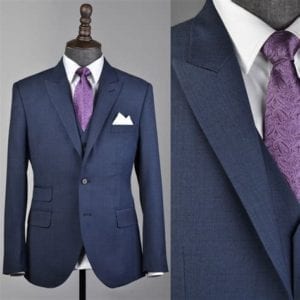
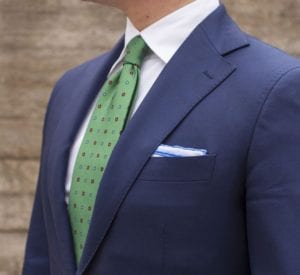
Contrasting: Blue and orange are complimentary colors, so warmer shades go well with cool blues. Just like with grey, find ties with blue in them to have a cohesive look, or add a pocket square or lapel pin to pull it all together. Each of these packs energy into a standard blue suit.


Brown/Tan Suit: Brown is a great suit color that you can wear all year long. Darker in the winter, and gradually lightening through spring and finally ending in light tan or cream in the summer, don’t forget too add this color into your wardrobe once you have the basics. You can pair just about any color with this neutral, and soon you’ll want to start changing up the shirt colors to explore more options!




We hope you enjoyed this crash course and that you’ll use some of these tips to start creating your own winning suit and tie outfit combinations! Of course, these are all just starting points for portraying your personal style. Have fun, don’t be afraid to try something new, and remember our staff is always here to provide in-depth style advice at both of our Arizona locations.
Wether you are looking to purchase your first suit or own 5, deciding on the right outfit for an interview is a common struggle for majority of people. For ladies, this task might seem even more difficult trying to sort through the abundant choices that are offered. Artful Tailoring has created this easy to follow guide to find the perfect look to land that interview.
The suit: navy and charcoal are still the best go-to options, and can get even away with a medium grey during warmer months. Look for fitted pieces, but comfort should be key. You don’t want your biceps to bust out of your sleeves or have your pants split the moment you sit down. Have an interview within the business sector? These companies typically like to see a very put-together and traditional look. A classic white button down is always a safe and smart idea. Make sure those shirt cuffs show 1/2″ longer than your jacket to show your attention to detail. Add some interest either with a textured shirt or slightly patterned tie (but nothing too bold).
AT Tip: If you wear a white shirt, your tie should have your suit color in it, and up to two other colors maximum. This keeps the eye focused but still adds interest to your look.
Don’t forget to match your belt with your shoes (and make sure they’re cleaned!). A higher rise sock will cover your raised hem once you’re sitting, so make sure its business appropriate (typically matches the pant color) and hole-free.
If you’re interviewing for a job in the creative field, some of these rules can be bent. You can incorporate some texture in your suit, too. It’s still good to stick to the “two simple, one busy” rule to create a focal point in your outfit. Try to choose a patterned tie that has your shirt and suit color in it to bring everything together. A more colorful sock option can show your artistic personality but still look proper. Is the environment even more casual? You may be able to get away with a contrasting sports coat and khakis, paired with a nice button down sans tie.
Regardless of which option you go with, make sure to check in with a tailor to see if anything needs to be repaired or altered a few days before the interview. You wouldn’t want a missing button to ruin your morning! Once it fits nicely, drop it off at the cleaner: wrinkles say more than you realize. Even if you know the company has a casual dress code of jeans and a T-shirt, it never hurts to put in the extra effort to dress up. It’ll show your interviewer that you care enough about the job and will make a positive impression.
For women, the options for clothing and accessories are seemingly endless. How does one weed out the good from the best? It all starts with your physique. Knowing what types of garments look best on you is the first thing you should understand.
Triangle: Look for pieces that are fitted in the top, and free-flowing in the bottom. A knee length A-line or fuller skirt paired with a fitted button down shirt is one professional option. A conservative dress with the same attributes, paired with a fitted blazer is another great choice for this body shape.
Inverted Triangle: The trick with this shape is to balance out your top and bottom halves. This can be achieved by adding fullness to your bottom through fuller silhouettes (pleated works too!) or via color coordination. By wearing lighter colors on the bottom and darker on top, you’ll trick the eye into thinking the top is smaller, and the opposite for the bottom. Avoid exaggerated elements on your blouses such as collars and sleeves, and stay away from form fitting skirts and pants. A flared, lighter-colored trouser with a navy or black simple fitted blouse will be the perfect match for an interview!
Rectangle: This is the most common body shape among women. For this shape, neither the top nor bottom is bigger than the other. You can create a faux hourglass style by accentuating the top and bottom, and having a fitted waist. Detailing on blouses such as small ruffles or gathering brings the eye to the top. Wearing this with a flared skirt or peplum bottom also attracts the eye to the bottom, creating an equal balance. Belts will be your best friend to cinch in the waist! A ruched, 3/4 sleeve, knee-length dress is fitted in the waist and still adds detail to your top half, making this an ideal option. Pair it with tights if you think it may be too revealing. A belted, peplum top, a nice necklace, and trousers covers all the spots for this shape!
Hourglass: The rules for an hourglass figure are similar to a rectangle, but instead of adding fullness to both, you want everything fitted. Your body is already proportioned, so you don’t need to add anything else! If you’re afraid of appearing “too sexy”, color blocking can be perfect when searching for an interview outfit. Look for dresses that have black side panels to help decrease the appearance of your curves. Add a fitted cardigan and belt to finish off the look. A slightly flared bottom and a bolder necklace can also help draw the attention away from your hips. If you opt for a more fitted skirt or trouser, add some detailing or go with a blousier option for the top to create balance.
Diamond: Also referred to as “pear”. With this body shape, the idea to is draw the eye to the top. Look for blouses that have an empire waist and that are light and allow movement. Belts worn slightly higher than your natural waist are also a great idea. Wrap tops are often a favorite among this body type since they cinch right under the bust, giving a larger appearance. Plunging necklines are also recommended, though make sure you wear a camisole underneath for interviews! You can still wear a fitted bottom, but just as with the Hourglass figure, make sure it’s plain in color and style, and keep all of your focus on the top half. A blazer and A-line dress is also option that is work appropriate and goes well with your body type.
Rounded: The styling goals with this shape are to elongate the waistline and to create the look of a smaller waist to balance out the top and bottom halves. We can achieve this by drawing interest to your neckline and legs, and finding more structured pieces to wear. Wider and “V” cut necklines, empire waist tops, and statement earrings and necklaces are all great things to look for to compliment your upper half. Look for boot cut pant styles and wrap dresses with a slightly flared bottom. Make sure your dress hems only go to the knee length as you’ll want to show some skin to help your legs look longer! Contrary to what you might think, avoid belts or embellishments on your waistline. Accessories are your key investment pieces, but for an interview we suggest to keep things on the simpler side. You don’t want your outfit to speak louder than you do!
In conclusion, keep things simple and clean for an interview. Once you have a better idea of the work environment, you can start letting your personality shine through! Visit a tailor for any last-minute adjustments, and make sure your garments are clean and pressed. Now go out there and land that job!

Now that you’re educated on the types of fabrics available for custom shirts, we wanted to take a deeper dive into the most common choice for dress shirts: cotton. Haven’t read our previous blog post yet? Read it first, here.
Cotton is a natural fiber that grows from cotton plants. It can be knitted or woven, and is sometimes mixed with other types of fibers to create a fabric blend. There are many types of cotton available today. We’ve explained the different varieties below including where they come from, what their traits are, and how they’re ranked amongst each other.
EGYPTIAN & GIZA
People tend to ask for this type of cotton by name, but what really ranks Egyptian as supreme, and what’s the difference between its cotton counterparts? First off, this cotton comes from the country of Egypt where the climate allows for a unique production of long fibers. This can then be turned into thinner fibers for weaving which allows a lightweight touch, but it does not sacrifice its strength as it tends to have a higher thread count. Therefore, Egyptian cotton items tend to last much longer than regular cotton ones (typically 40-50 years). A lot of companies claim to have “Egyptian cotton” products, but be wary of counterfeits.
Giza cotton is a subcategory of Egyptian cotton, but this type is produced in a specific area along the Nile delta. It is known to be the most fertile part of the country and can only produce a limited amount each year. Oftentimes it is hand-harvested and hand-combed, which help keep the long fibers intact. It is considered the strongest cotton, while still retaining an extremely soft touch. If you’re wondering why its usually the most expensive type of cotton, now you know!
PIMA
Another common cotton type is Pima. It is grown in the southern United States. Although its very similar to Egyptian cotton as is too produces a long fiber staple, it comes up slightly short. Pima still creates fabrics that are soft to the touch and very strong. These crops take up to 9 months to grow, which accounts for its higher cost compared to other types.
SUPIMA
Only grown in the US, most commonly in the southern states such as California, Arizona, New Mexico, and Texas. Usually items with Supima label are domestically produced and must be sourced through a licensed supply chain. Supima cotton grows extra-long staples (about 1.5″).
UPLAND
Upland cotton accounts for 99% of the cotton grown in the United States (with the other 1% being Pima), and is the primary cotton for most products around the world. Typically produced in (but not limited to) Texas, Georgia, and Mississippi, it grows medium and short-staple fibers.
SEA ISLAND
Grown on the West Indian Sea Islands, there is no guessing where this cotton is from. The isles, like the Nile, also have a unique and perfected climate to flourish in. It has a very uniform texture, high-strength, luster, and the touch of cashmere/silk. You may not have heard of Sea Island since it only account for 0.008% of all cotton produced every year. There are companies that label their cotton “Sea Island quality”, but only those products bearing the West Indies Sea Island Cotton Association labels are authentic.
Which type of cotton is your preferred choice? Let us know in the comments below!
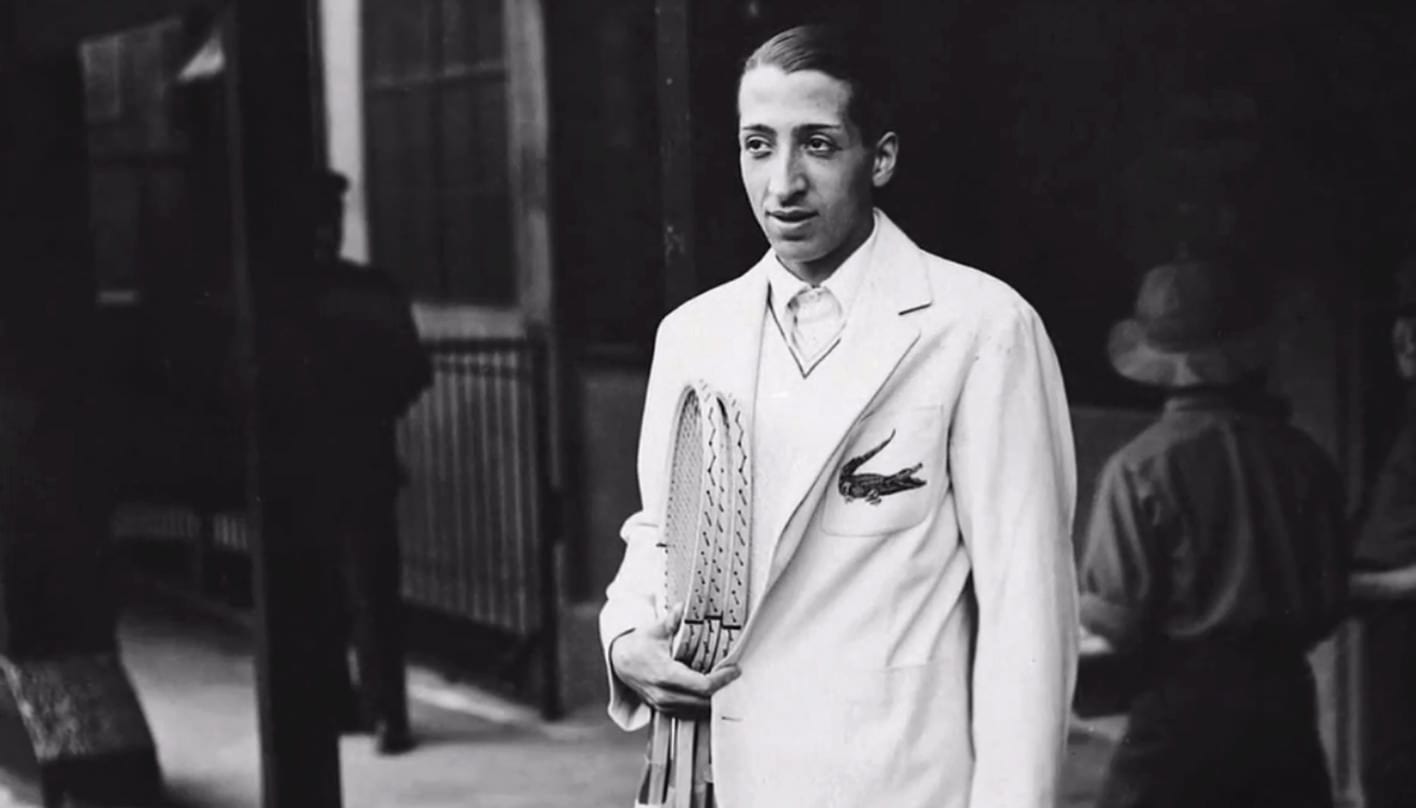
Modern fashion is all about rehashing style: taking old ideas and making them new. However throughout the years, the polo has managed to hang on. Although it was never really en vogue (aside from the 70’s), this garment is now no longer reserved for the weekend. More lax dress codes in the work place has allowed for an increased freedom of self-expression through your outfits. The polo is one item that is finding itself now being worn mid-week.
See how you can get more wear out of this classic staple below.
But first, where did the polo come from? There are some common misconceptions on the origination of the garment. It first appeared in Manipur, India back during the 19th century. However, in 1926 Jean Rene Lacoste was actually the first to put a brand on it (you may have seen shirts with an alligator on the chest). Being a polo player himself, the invention came out of a need for practicality. In addition to the redesign, he is also credited for introducing pique cotton which is still in production today. “The Tennis Shirt” quickly became popular with golfers and polo players alike. Ralph Lauren did not invent the polo, but he certainly did popularize it and officially christened the garment during the 1970’s.
Now in 2018, thanks to these predecessors in fashion, sports clothes are no longer reserved for athletes. Polos have found their way into mainstream menswear and they don’t seem to be leaving anytime soon. So how can you incorporate it into your outfits?
The main err in pairing up a polo with a more structured outfit such as a suit is the flimsy collar on the shirt. This creates an instantly more casual effect, but with the right combination you can make it work.
Option #1: Clean but casual
You want to look put together, but still feel comfortable in high temps. Tuck your polo into a pair of fitted chinos or even a linen blend pant. The key to elevating the look is the right accessories. A nice watch with a colorful strap, classic belt, and matching loafers all fit the bill of looking put together without overdoing it. You’d also be able to get away with the right pair of sneakers for this look, if the mood strikes.
Option #2: A step up
Need to step it up a notch? Throw on a blazer or sport coat on top of the outfit idea above. Fabrics such as cotton, linen, or silk will work best as they are less structured than traditional wool jackets. We recommend a polo in a neutral color, but keep this rule in mind: if you go light with the shirt, do the opposite for the outerwear (and vice versa). This keeps the look grounded. Always remember no-show socks to maintain the laid-back styling.
Option #3: Let me upgrade you
Depending on your job’s dress code restrictions, this next look may push the traditional envelope. But hey, rules were made to be broken (or at least bent) right? You may have seen an uprising in the “polo with suit” trend thanks to celeb stylists, so we say why not give it a go! A lighter color suit lends itself to being interpreted as more casual right off the bat. Light grey, tan, and even light blue suits are good matches for your polo. Upgrade your look with a nicer link watch, darker brown belt and keep your polo buttoned up (although European styling may have something to say about that last bit). Want to be more adventurous? Tuck in a pocket square and change the belt out for suspenders. Finish off the look with some designer shades or a straw fedora.
You may think polos are thick and heavy, but custom polos from Artful Tailoring are anything but. Our’s are soft and rich, yet breathable with moisture-wicking technology. Place an order today and get styling!

